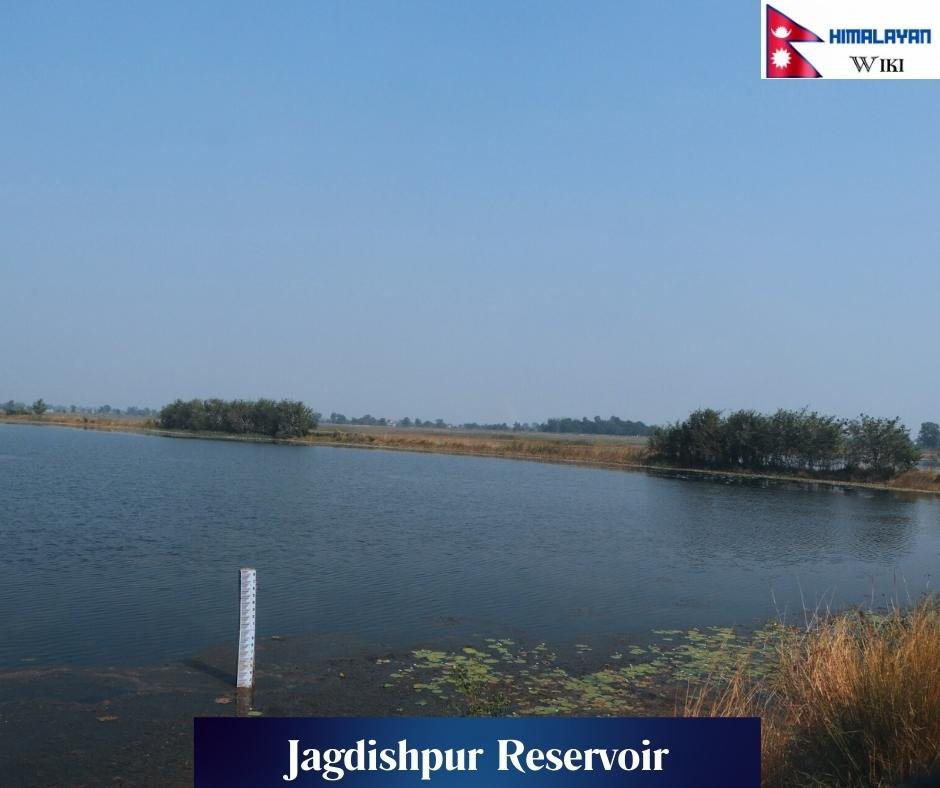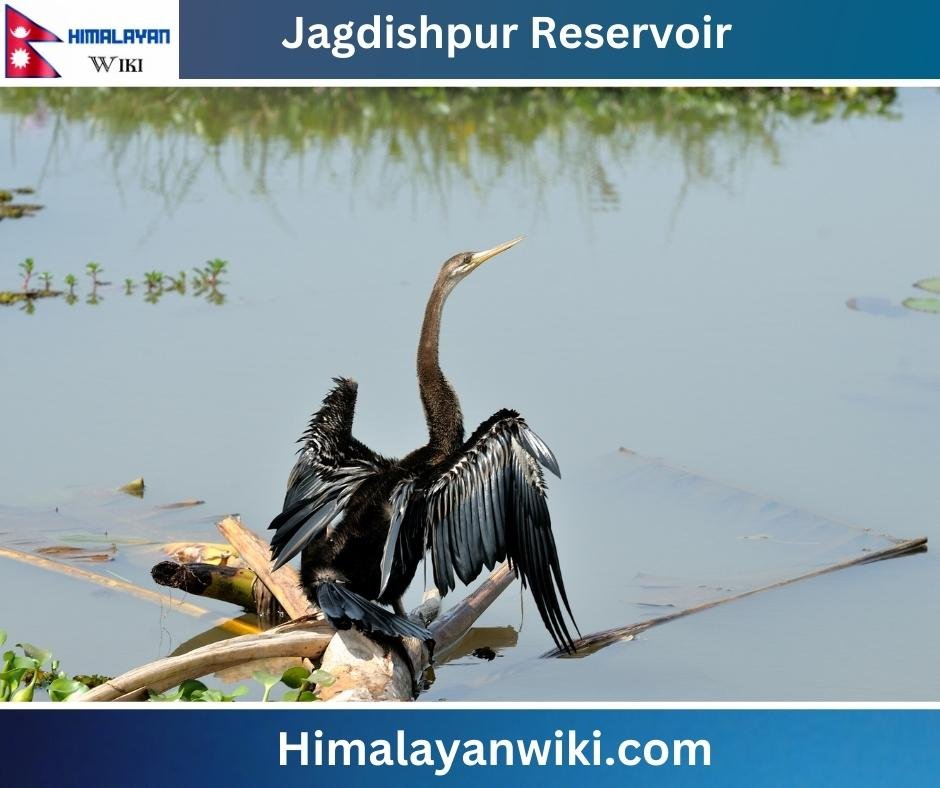✔ Jagdishpur Reservoir is a fantastic destination to explore a habitat of numerous birds and fishes globally, typically called Jakhira taal. It is popular because it is recognized as the 2nd largest man-made lake in Asia. It is in Jahadi Village, Kapilvastu District, Lumbini Province, Nepal.
Technical Detail:

| Feature | Information |
| Location |
|
| Inlet countries |
|
| Lake type |
|
| Coordinates |
|
| Primary inflows |
|
| River origins |
|
| Primary outflows |
|
| Catchment zone |
|
| Driving agency |
|
| Identified |
|
| Maximum length |
|
| Maximum width |
|
| Surface space |
|
| Surface height |
|
| Established |
|
History of Jagdishpur Reservoir:
✔ It is believed that the Jagdishpur Reservoir was named after Jagadish Jha, the designer and supervisor of the construction of the Banaganga Dam.
✔ It is the most enormous Reservoir in the country, consisting of a surface area of 225 ha (2.25 km2). It is a significant wetland site at 197 m (646 ft).

✔ The highest water depth is 2 m (6.6 ft) in the dry season, which rises to 7 m (23 ft) during the monsoon season.
✔ The Ramsar Convention has listed the Reservoir as one of the Wetlands of International Importance. That is to its ecological importance.
✔ It was created in the 1970s to provide water to crops at Jakhira Lake. The Reservoir was announced as a Ramsar site in 2003.
✔ Though the birds and different kinds of fauna at the site have not been studied, the Reservoir is an influential habitat for several species and a significant site for nature lovers.
Vegetations:

✔ The reservoirs are covered by farmland with two small lakes, i.e., Sagarhawa and Niglihawa, which protect bird movements.
✔ A comprehensive range of floating-leaved and ample submarine species characterizes the aquatic vegetation.
✔ The viscous aquatic macrophyte vegetation demonstrates an advancing eutrophic quality, which could contribute to a squeezing in the Reservoir’s lifespan in the insufficiency of a desolation tank (DNPWC and IUCN 2003).
Biodiversity:
✔ The wetland birds rooming in Jagdishpur are essential for the ecosystem. The site has been recognized as a necessary habitat for inhabitant, wintering, and advancement itinerant wetland birds that have registered five globally endangered species, including Lesser Adjutant.

✔ Although a survey accomplished in July 1997 discovered 42 bird species during heavy rain, no other organized survey has been manipulated. It is admiringly conceivable that many additional species succeed in this area, and their designation and conservation are paramount for ecosystem conservation.
Non-bird biodiversity: The wetland area is the residence of a slight population of the globally imperiled Smooth-coated Otter Lutrogale perpsicillata. A survey accomplished in July 1997 by DNPWC and IUCN declared that 25 different fish species were determined in the wetland.
Fauna:
✔ The Lake slime and nutrient sediments have assembled an advantageous backdrop for the growth of reed beds, which deliver shelter to many endangered species.
✔ The habitat encircling the Reservoir is paramount for wetland birds that reside, winter, or emigrate here and is home to 118 distinguishable bird species, including 11 globally endangered species.
✔ The formulated land encircling the Reservoir also supplies a habitat for considerable bird species. Even 18 fish species, nine herpetofauna, and six mammalian species have been documented in and around the Reservoir. Unique species reported in the area incorporate:
| Scientific Name of Bird | Common Name | Image | IUCN Status |
| Asian openbill | ✔ Anastomus oscitant |
| ✔ Least Concern |
| Black-winged kite | ✔ Elanus caeruleus |
| ✔ Least Concern |
| Egyptian vulture | ✔ Neophron percnopterus |
| ✔ Globally Threatened |
| Greater spotted eagle | ✔ Clanga clang |
| ✔ Globally Threatened |
| Indian spotted eagle | ✔ Clanga hasta |
| ✔ Globally Threatened |
| Lesser adjutant | ✔ Leptoptilos javanicus |
| ✔ Globally Threatened |
| Long-tailed shrike | ✔ Lanius schach tricolor |
| ✔ Least Concern |
| Oriental darter | ✔ Anhinga melanogaster |
| ✔ Least Concern |
| Pied Kingfisher | ✔ Ceryle rudis |
| ✔ Least Concern |
| Red-wattled lapwing | ✔ Vanellus indicus |
| ✔ Least Concern |
| Ruddy kingfisher | ✔ Halcyon coromandel |
| ✔ Least Concern |
| Sarus crane | ✔ Grus antigone |
| ✔ Globally Threatened |
| Slender-billed vulture | ✔ Gyps tenuirostris |
| ✔ Critically Endangered |
| Smooth-coated otter | ✔ Lutrogale perspicillata |
| ✔ Endangered |
| White-rumped vulture | ✔ Gyps bengalensis |
| ✔ Near Threatened |
| Woolly-necked stork | ✔ Ciconia episcopus |
| ✔ Globally Threatened |
Explore the hidden glory of the reservoir:
Panoramic views of birds

Amazing Boating Facilities

Attractive Lotus flowers

The ultimate target for irrigation

The depth of water varies from 2m to 7m seasonally

Unique Key Factors:
✔ Jagdishpur Reservoir has the most tremendous significance for bird diversity.
✔ It occupies around 20% of the birds in Nepal.
✔ The Reservoir consists of 168 classes of birds out of 871 found in Nepal.
✔ Altogether, 90 types of birds stay in the Reservoir permanently; however., the remaining birds come during the summer and winter seasons as per their favorable weather.
✔ It is famous for its organic and biological diversity.
✔ It is the resident of 39 raithane Fish species, 39 ubeichar, and 13 mammals.
✔ Almost 168 varieties of birds are found on this Reservoir, where 11 birds are globally endangered.
✔ The birds typically migrated here from Syberia, China, Russia, Mongolia, Kyrgyzstan, etc.
✔ Now, The Reservoir serves as a facility for boating for visitors.


















